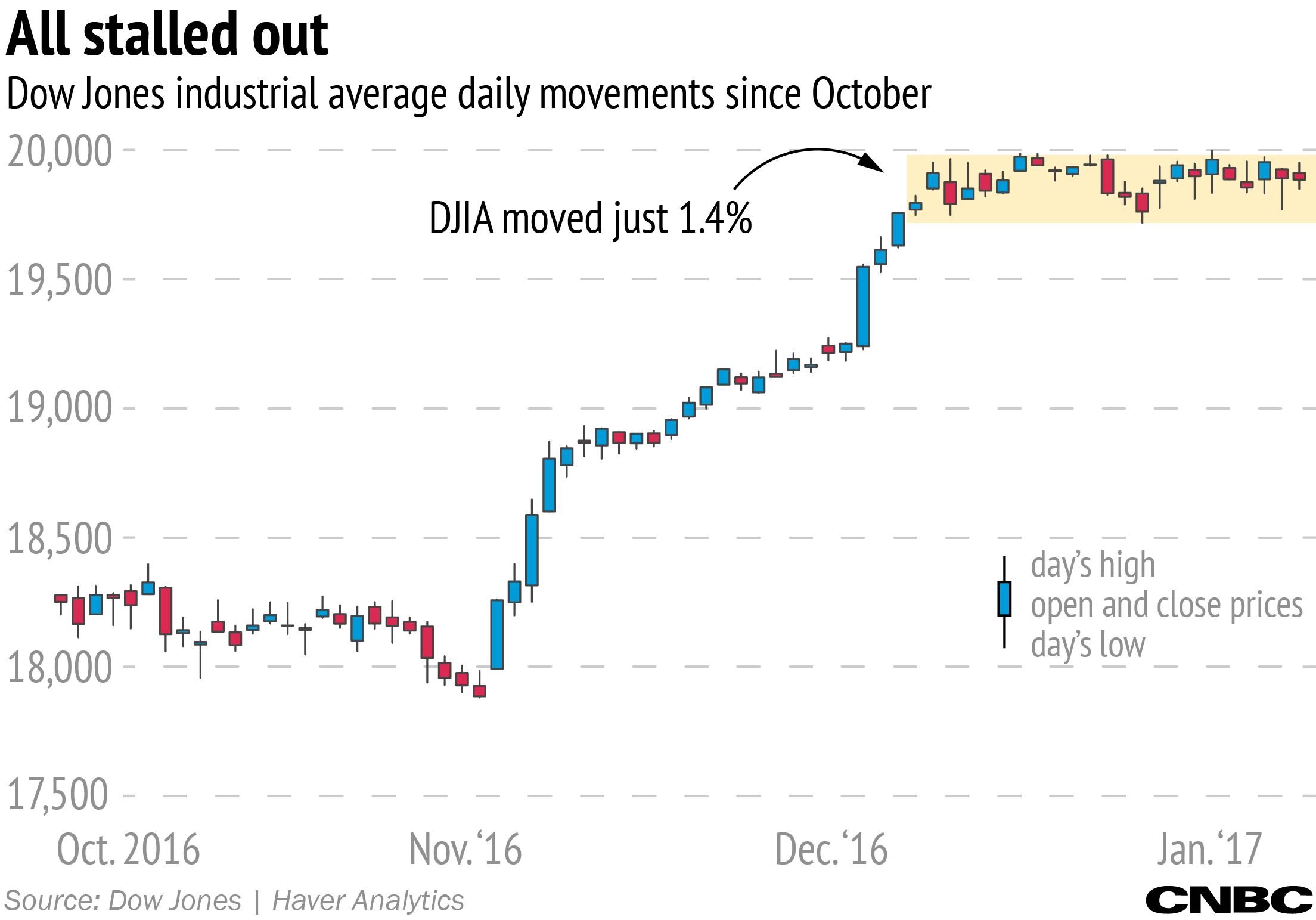If it seems like the stock market's crawl to nowhere over the past month has been particularly strange, that's because it has been. It turns out the gap between the Dow's high and low prices over the past month is a tiny 1.4 percent — the narrowest gap in data going back to 1957.
It was just over a month ago, on Dec. 13, when we saw the Dow Jones industrial average cross 19,900 for the first time. Since then, we've seen an intraday high of 19999.63 and a low of 19719.67. The gap between those two levels is only 1.4 percent. The Dow's entire past month has stayed within that extremely tight range.




